Many music lovers assembling their audio system rightly prefer a separate device for listening to streaming music rather than just using online resources. For this purpose, you need to buy a streamer – a device that receives a file from streaming services using a Wi-Fi connection, USB drivers, SD cards, etc. This device subsequently sends it to a DAC for conversion. So, in this article, I decided to review various music streamers and highlight the best music streaming device simultaneously.
Using the audio streamer as a base, you can build a complete audio system around it by adding the rest of the components. Depending on the streamer type, you can add a dedicated amplifier, DAC, and acoustics to this audio system. In addition, there is another option: add the music streaming system to an existing audio system.
Music streamers comparison table
| Name | DAC | AMP | Sampling Rate | Storage | Roon ready | Review |
|---|---|---|---|---|---|---|
| Bluesound NODE network music player | yes | no | 32 bit/384kHz | no | no | Review |
| Yamaha WXA-50 AMP for streaming | no | 55W/8 Ohms | 24 bit/192kHz | no | no | Review |
| Bluesound POWERNODE all-in-one network music player | yes | 60W/8 Ohms | 32 bit/384kHz | no | yes | Review |
| Bluesound Vault 2i audiophile music server | no | no | 32 bit/192kHz | 2 TB | yes | Review |
Music streaming devices explained
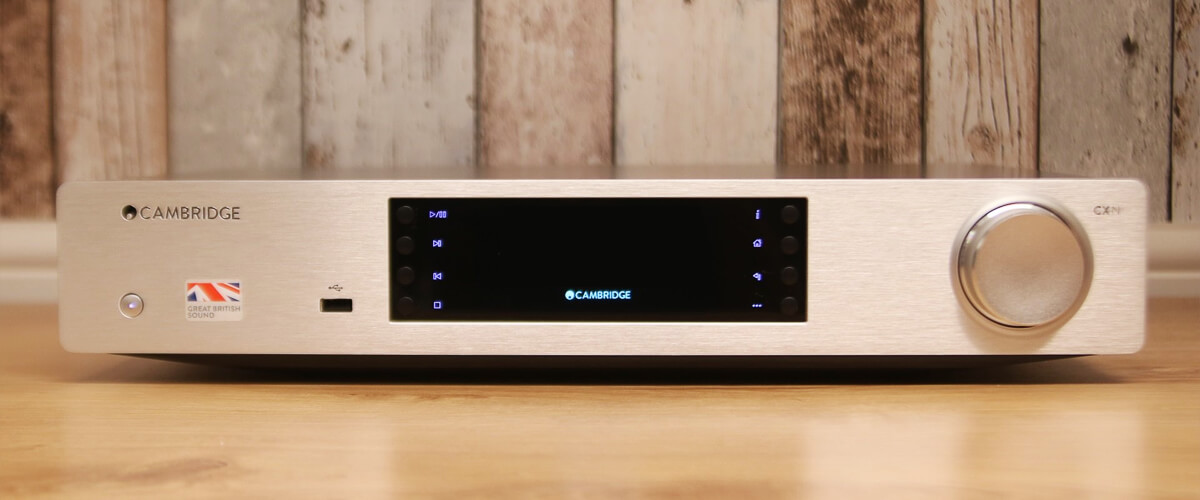
Let’s take a look at the difference between various types of music streamers. For starters, it’s important to understand that any component of an audio system that allows you to play music wirelessly can be music streamers. They do it differently – using a streaming service application or using the network storage device you have in your system.
The streamer can be a combined device that has three functions. Firstly, the conversion of digital music files to an analog signal. This is possible when the device has a built-in digital-to-analog converter called DAC. Secondly, the presence of streaming music, or its amplification, provided that the device has an integrated amplifier – amplifier – AMP. Well, the last feature is the availability of streaming capabilities.
Note that many music streamers often have DACs built-in. This definitely means that they can do everything: extract, stream music, and convert audio. Music streamers often refer to these devices.
There is another category – devices with a built-in amplifier – AMP. They only amplify the audio signal and have the ability to stream music. They are called that way because manufacturing companies want to sell their product as an amplifier (AMP) in the first place. But the appliance has the added feature of streaming capabilities.
The next category is All-in-One Network Music Players. This device combines both DAC and AMP and the ability to stream music. Such devices can be safely referred to as hi-fi streamers because the presence of such a device greatly simplifies the work of setting up and can become the center of a high-end audio system; you just need to add acoustics, such as speakers.
And the last one is the audiophile music server. This type of device contains an internal hard drive where you can store your music files. The top-tier models feature a CD ripper and are exceptionally well-suited for converting your CD collection to high-quality digital files.
Best Music Streamers Review
Best Network Music Players
Bluesound NODE – best network music players
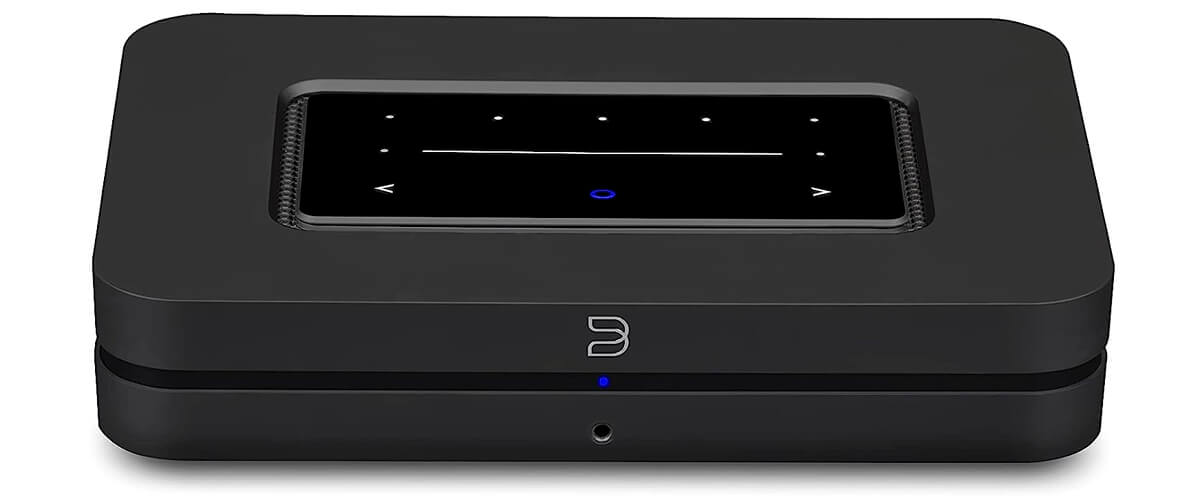
Bluesound has released an incredibly cool device that combines many useful features with a concise, attractive design.
First, it’s important to note that the device has a premium built-in digital-to-analog converter, i.e., DAC. The built-in 32-bit/384kHz sampling rate is a pleasing performance, but unfortunately, the device does not have a built-in amplifier. Also, the Node has a rather average power of 60W, but it is quite enough.
The number and variety of connections will also please the user, offering HDMI eARC, digital, optical, and analog I/O, Ethernet, trigger, and subwoofer.
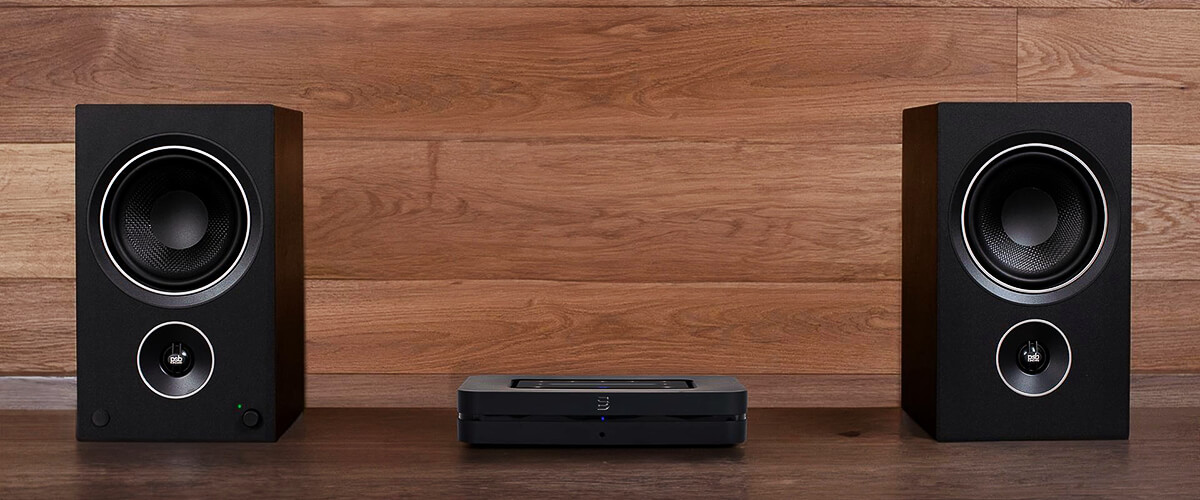
Looking for additional benefits, this streamer has dual-band Wi-Fi. It also supports Apple AirPlay2 and other streaming services. In addition, the two-way Bluetooth with support for aptX is also a nice advantage in the market, as you can use wireless headphones through the BluOS app.
The Bluesound Node is compatible with iOS, Android, Mac, or PC and also works with Amazon’s voice assistant Alexa when you connect the BluVoice skill.
Bluesound Node can be called the best music streamer without hesitation. It combines modern wired and wireless connections, is compatible with any operating system and stereo amplifiers (receivers), has touch and voice control, and other advantages over devices of its price category.
Key specs
- DAC: yes.
- AMP: no.
- Sampling rate: 32 bit/384kHz.
- Storage: no.
- Roon ready: no.
Cambridge Audio CXN V2 – best network music player
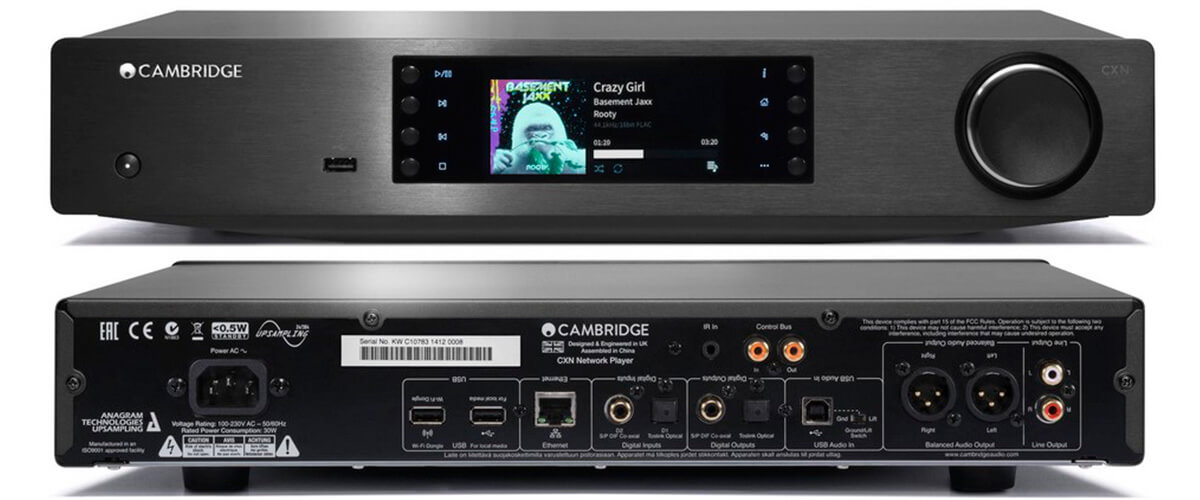
Cambridge Audio CXN V2 network player is a great combination of nice design with consistent geometry and ultra nice buttons, and many great features built-in by the manufacturer. Let’s take a closer look at this model.
In some places, it repeats the review of the previous product: CXN V2 still has a wonderful DAC but unfortunately cannot boast of having any amp. The sample rate is also slightly lower, namely 24 bit/192kHz. It’s not that it’s bad; it’s just a little lower.
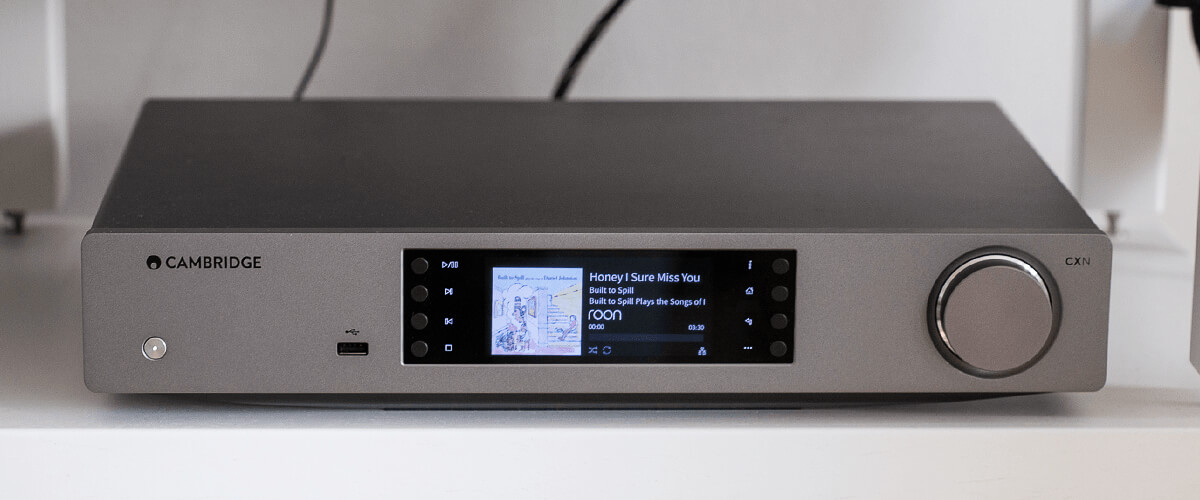
With this version, you can enjoy streaming services like Tidal and Spotify Connect. In addition, the stream music feature has been added via Apple Airplay2 and Google’s Chromecast. Speaking of sound, it will not leave anyone indifferent: the incredible combination of rough bass when playing heavy songs and the subtle, pleasant sound of playing instrumental compositions enchants the listener.
By the way, the CXN V2’s screen deserves special mention. It has a resolution of 4.3″ and perfectly shows the track, artist, album, and sampling rate, with album artwork in full color.
Key specs
- DAC: yes.
- AMP: no.
- Sampling rate: 24 bit/192kHz.
- Storage: no.
- Roon ready: yes.
Best AMPs For Streaming Music
Yamaha WXA-50 – best AMP for streaming
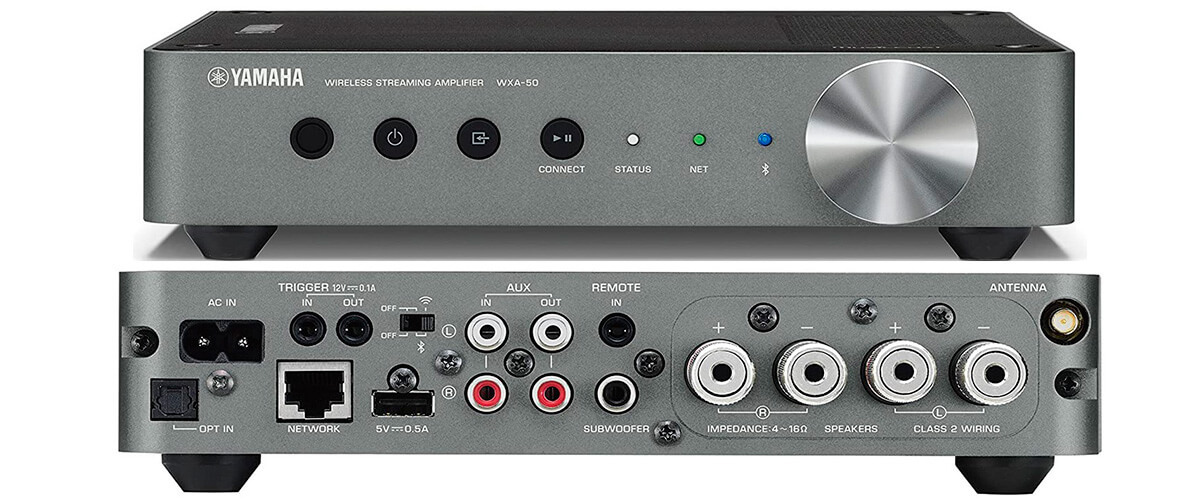
Yamaha has long been known in the audio market for its incredible reliability and practicality. That’s why I’ve included the WXA-50, which I consider to be the best streamer without DAC. And now I will tell you why.
Firstly, I would like to note the delightful design that does not interfere with the user, but on the contrary, it looks very smooth and laconic. In addition, you will become the owner of the most excellent audio system if you decide to choose the speakers that match the color.
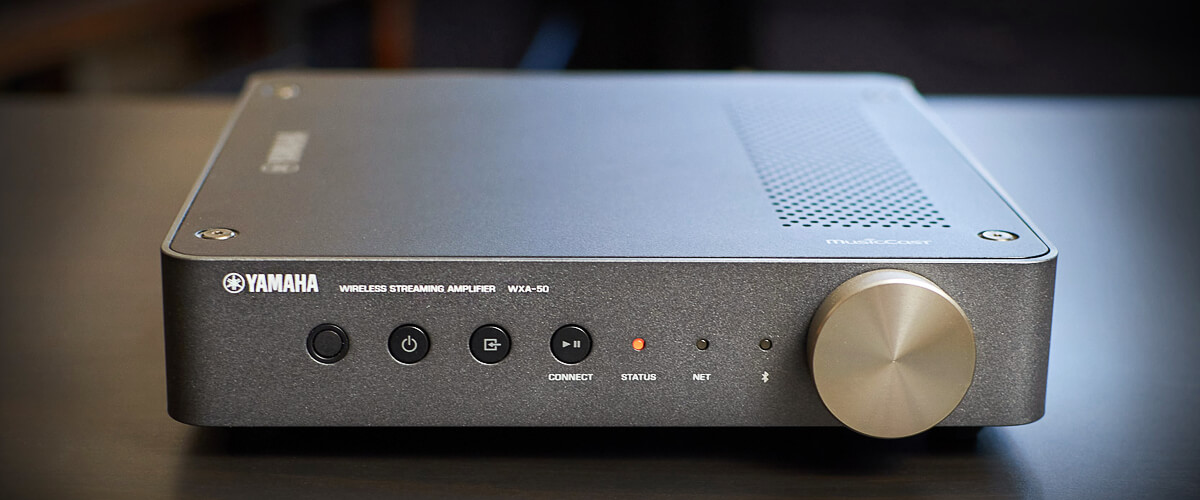
Let’s talk about the stuffing and what is so good about this streaming music player. This device uses ICEpower class-D amplifier modules with a specified power output of 55Wpc into 8 ohms, 70Wpc into 6 ohms, or 105Wpc into 4 ohms. It is also important to know that the frequency of the sound produced by the appliance varies from 20Hz to 20kHz. BUT, be sure to take into account that despite the wonderful characteristics, keep in mind the small size of the amplifier. It often happens that with prolonged loads, the WXA-50 runs a little hot. Therefore, it must have space for ventilation.
Connectivity and capabilities are also critical topics. In the case of the WXA-50, it supports Apple AirPlay, via which you can stream music to the amplifier from an iOS gadget or Mac computer. There is also support for AirPlay 2, making it easy to stream from an Apple to multiple AirPlay 2 devices for multi-room audio playback. Of the shortcomings, I would like to note the limitations of the WXA-50 because it allows only one-to-one streaming via AirPlay. Plus, the WXA-50 has Bluetooth. On the other hand, it does not support either aptX or aptX HD in any way.
Key specs
- DAC: no.
- AMP: 55W/8 Ohms.
- Sampling rate: 24 bit/192kHz.
- Storage: no.
- Roon ready: no.
Denon PMA-150H
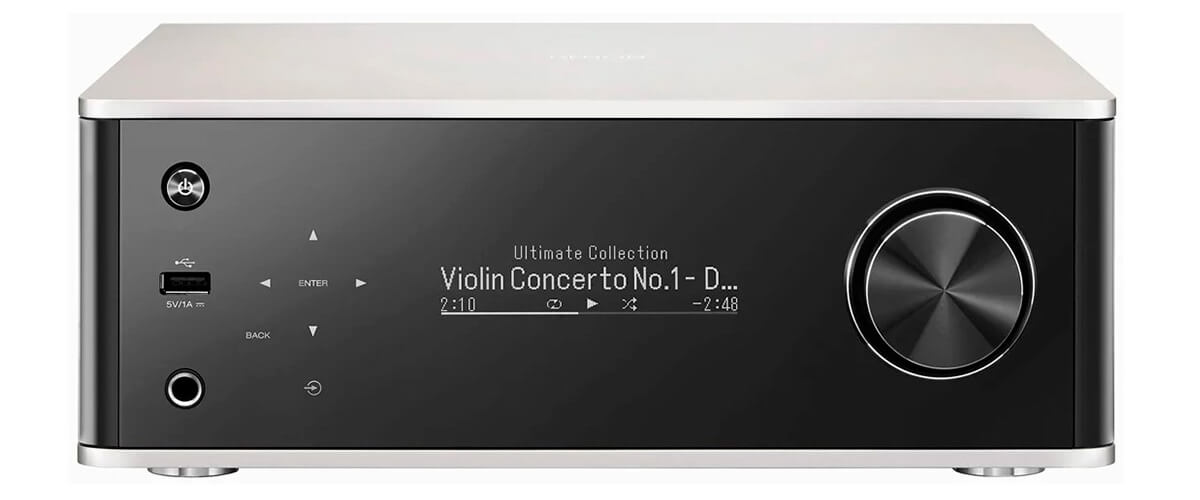
The PMA-150H is a highly competitive audio streaming device in the market. This device is very versatile, which makes it incredibly convenient to use in any actions related to audio.
If you are already familiar with Denon products, you are probably familiar with the HEOS program. As such, the PMA-150H is not an exception and is also equipped with HEOS. It is Denon’s solution for a wireless, whole-home audio experience. Loading the HEOS app into any mobile gadget also makes it possible to control the PMA-150H with Amazon Alexa and Google Assistant. In addition, using the proprietary HEOS application, you can listen to music without leaving your favorite applications because this model supports all music services, including Spotify, Apple Music, Tidal, Amazon Prime Music, and many other platforms.
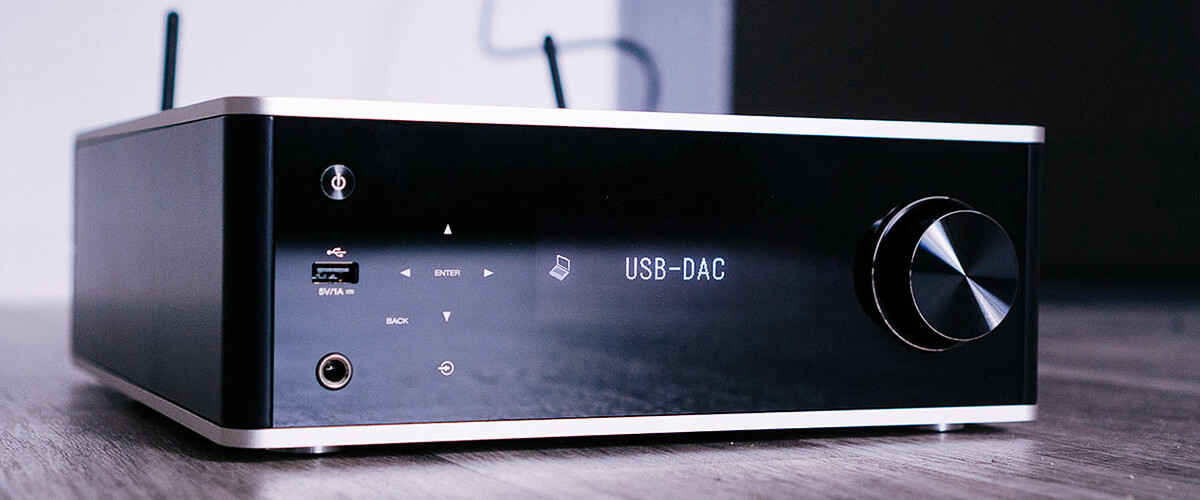
On the more technical side of the player, it is important to consider that the PMA-150H is an integrated Class D amplifier with a built-in DAC and network connectivity. By the way, this device can recognize AV-specific DTS and Dolby Digital audio formats and is compatible with high-resolution digital audio formats like ALAC, FLAC, WAV, and DSD. Moreover, there is also an onboard DAC able to handle up to 32-bit/384kHz PCM and 5.6MHz DSD.
Key specs
- DAC: no.
- AMP: 35W/8 Ohms.
- Sampling rate: 24 bit/192kHz.
- Storage: no.
- Roon ready: no.
Best All-in-One Network Music Players
Bluesound POWERNODE – best all-in-one network music player
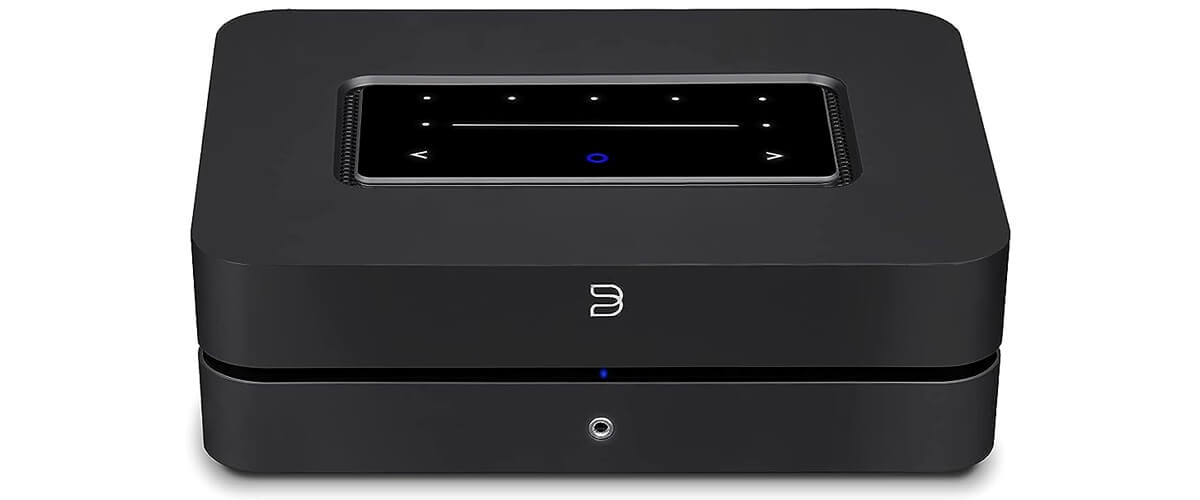
Bluesound POWERNODE is similar to Bluesound NODE in many ways. But unlike the latter, it represents a series of all-in-one network music players. And more than worthy. This wonderful device combines many cool features with beautiful design and compactness. Traditionally for quality performance, the instrument features a 32-bit/384kHz DAC and a built-in 80W HybridDigital amplification system (which also compares favorably to the NODE if you prefer compactness and versatility).
Like all its predecessors, the POWERNODE boasts of its versatility, allowing users to connect via Bluetooth and Wi-Fi without any problems. In addition, the device can be controlled via Apple AirPlay 2 and Alexa Voice Control. Regarding Bluetooth, it is important to note the presence of aptX HD for streaming and facilitating the use of POWERNODE with a pair of wireless headphones.

The device is compatible with any receiver and iOS, Android, and Windows. You can stream multichannel audio in Dolby Digital, store up to 200,000 Hi-Res files on the server, and it even showcases Album Art in JPG and PNG formats.
Speaking of sound, there are absolutely no complaints here. The sound is crystal clear when playing even the strongest bass or instrumental tracks. Working with vocals often emphasizes similar dynamic abilities, so the individuality present in the Powernode is a great merit. Bluesound POWERNODE deservedly takes its place among the best music streamers.
Key specs
- DAC: yes.
- AMP: 60W/8Ω.
- Sampling rate: 32 bit/384kHz.
- Storage: no.
- Roon ready: yes.
Naim Uniti Star – premium all-in-one network music player
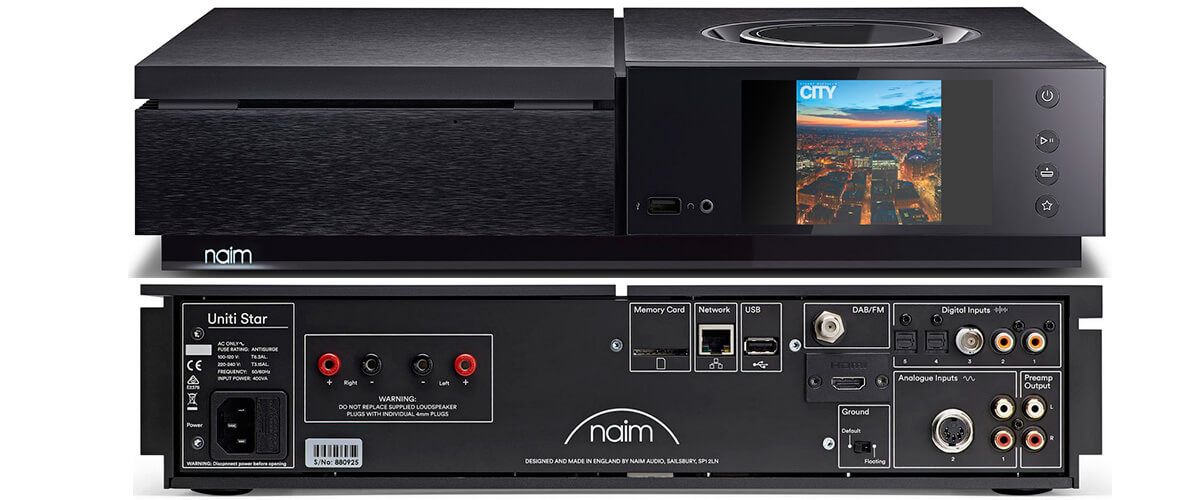
Another best network music player and versatile device is definitely the Naim Uniti Star. The developers managed to find the ideal formula for combining external beauty and variability. A distinctive feature of this appliance is the presence of a CD player. Many will not pay attention to this, but true connoisseurs and collectors of CDs will simply be delighted with this feature.
The number of streaming options is imposing. This high-end audio streamer includes aptX HD Bluetooth, AirPlay, and UPnP, aka network streaming, as well as embedded support for Spotify, Amazon Music, Tidal, and Chromecast.
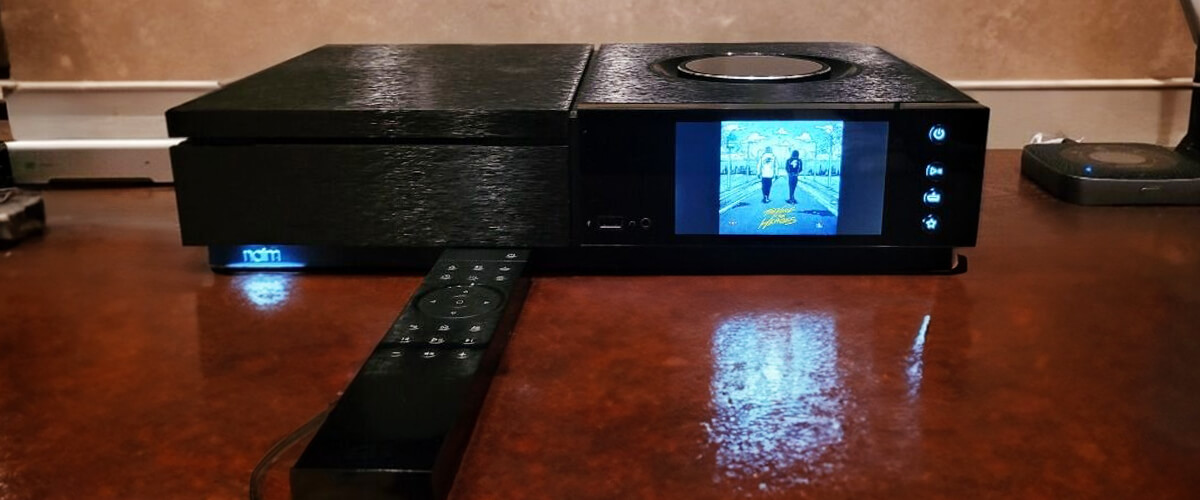
It is also worth adding that it is Roon-ready and capable of working as part of a Naim multi-room set-up along with the company’s other streamers and wireless speakers.
Speaking of physical connectors, there’s a generous spread of analog and digital inputs to accommodate external sources, including HDMI ARC to make connecting the Star to your TV easy. Speaking about the technical specifications, it will be important for the user to know that the streamer has an amp with an indicator of 70W/8Ω, while the sample rate of the built-in DAC is 32 bit/384kHz.
Key specs
- DAC: yes.
- AMP: 70W/8 Ohms.
- Sampling rate: 32 bit/384kHz.
- Storage: optional.
- Roon ready: yes.
Best Audiophile Music Server
Bluesound Vault 2i – best audiophile music server
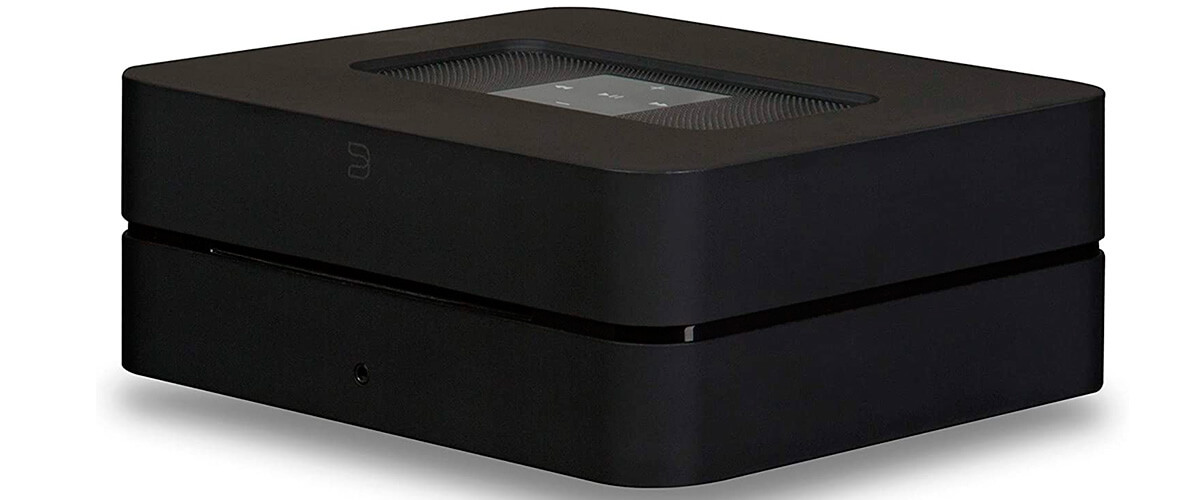
When it comes to a good Audiophile Music Server, you can often hear a lot of references to the best music streamer for audiophile — Bluesound Vault 2i. The presence of built-in 2 TB of hard disk memory makes this device an integral part of many audio systems for tens of thousands of users.
What I love incredibly about this digital music server is the fact that this is a music server that really only works as part of the BluOS ecosystem of products. It can rip CDs direct to its internal storage via the CD player. Unfortunately, there is also a drawback: libraries of content in your music collection cannot be seen by any other UPnP or DLNA equipment.

In the matter of compatibility, it is important to know that the player is compatible with PCM formats up to 24-bit/192kHz and MQA, and a considerable selection of music streaming services are embedded and supported natively. As well as AirPlay 2, there’s Bluetooth with aptX HD for short-range wireless streaming from compatible gadgets. The only thing that does not support it is Google Chromecast, which is a bit disappointing.
Key specs
- DAC: no.
- AMP: no.
- Sampling rate: 32 bit/192kHz.
- Storage: 2TB.
- Roon ready: yes.
Buyers guide

How does a music streamer work
Let’s look at what music streamers can make and how they work. The interaction of tape drive, network storage, and system management tools can be organized in many ways. For example, the use of access at the level of directories and files or before the use of non-standard proprietary solutions based only on transport network protocols.
Please note that DLNA is the most common interoperability standard. To implement this concept, it is necessary to ensure the interconnected operation of three functional modules: DMS, DMR (Digital Media Audio Renderer), and DMC (Digital Media Controller). DMS stores and sorts multimedia files, as well as broadcasts a digital audio stream to other modules of the system. In turn, the DMR receives the digital stream from the DMS and converts it into a standard form for transmission to the DAC. The latter, that is, the DMC controls the operation of the system. The streamer itself takes over the DMR functions. Any DLNA software server installed on a computer or NAS in the home network can be used as a DMS. To turn your smartphone or tablet into a DMC, you need to install one of the special applications on it and integrate it into your home network via Wi-Fi.
In fact, your best streamer is a specialized computer that reads content from network storage and broadcasts it to an external DAC. The component is usually equipped with functional blocks typical for a computer – a central processor, RAM, and read-only memory, controllers for network operation, and a USB interface.
Pay attention to this when choosing a music streamer
Sound quality
Аlthough some streaming modules may be used by different brands, keep in mind that the way they are implemented and the quality of the surrounding power supplies and built-in audio circuits are very important to the final sound quality.
When choosing an amplifier, you should always rely on the level of the rest of the audio system components. Also, when choosing, it is not recommended to choose expensive models for entry-level systems.
Usability
Despite the presence of a standard remote control, the availability of applications for remote control of the device is a real treasure! We can single out the BluOS control system – for the devices of this manufacturer, a mobile application from Naim and HEOS, which incredibly simplify the operation of the devices and, in general, help the user through a clear and simple interface. Using these devices and your streamer’s apps is the optimal way to navigate large music libraries and the fastest way to create playlists.
The first thing you need to enjoy your music streamer is a stable home internet network. From a weak or no such network, you will not be able to use any streaming services or control your equipment using a software application.
The next question is about choosing a direct-wired connection or wireless one. Avoiding wires is attractive because it makes things easier and easier to work with, and assuming your network is stable, it should work well for a lot of people. However, it is often recommended to use a wired network due to the fact that it is much more stable and will not interrupt during long sessions.
Music streaming features
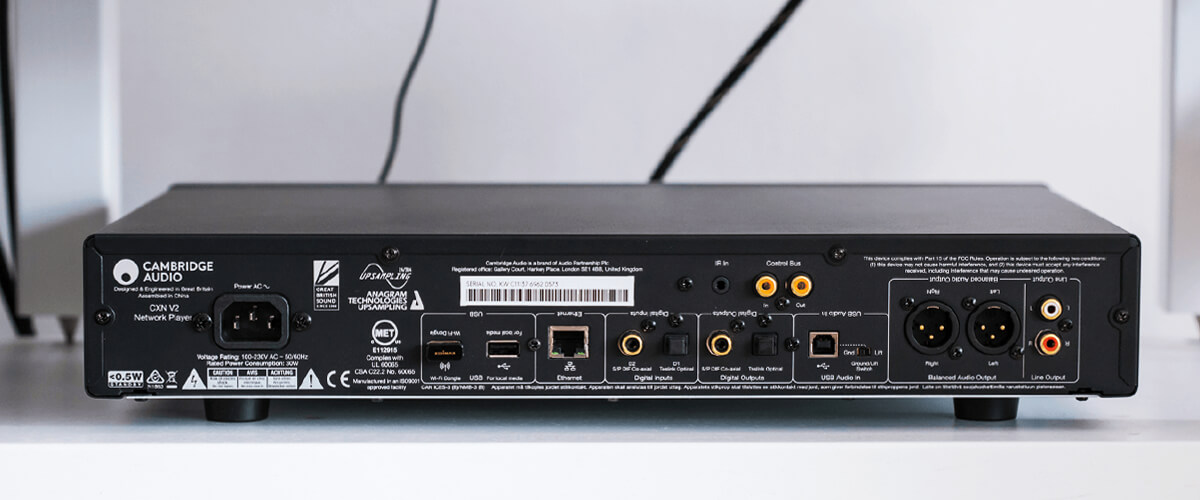
99% of all streamers have lots of useful features. They can:
- Play music files from a connected NAS drive without any problems
- Play various Internet radio stations
- Have Spotify, YouTube music, and even better applications like built-in Tidal, etc
Also, Bluetooth is present almost on all types of modern streaming solutions. Moreover, you are really lucky if this is the latest version of aptX HD. Also, remember that many streamers have digital output and inputs, so along with playing USB music files, you can usually also feed optical and coaxial digital channels.
Audio formats and file types explained
When using a music streamer, you are likely to come across several types of files. In fact, it is important to understand how they work and what they are in general, so let’s take a quick look at this.
There are two main things you need to know about a music streamer. First of all, consider the largest bit depth and sampling rate that it can accept. The sampling rate is the number of times the computer took a digital snapshot of a specific second of a music file. Thus, the more pictures it takes, the more detailed the sound will be. You can find this value in hertz (Hz), sometimes with the abbreviation of kilohertz (kHz).
Bit depth means how much information is contained in each snapshot. Repeating the sample rate situation, again, the higher the number, the better.
Actually, there are many different types of audio files, but the most common are FLAC and MQA files. These files are used by the streaming service Tidal, which easily ranks among the most popular and widespread high definition streaming services.
The main value of FLAC files is that they are compressed like MP3s, but they lose very little data. This means they are both fast-streaming and detailed enough.
MQA (Master Quality Authenticated) is a FLAC file when cracked. It creates very high-quality files that are very thin for continuous streaming. When working with a music streamer, you will most often come across these two types of files.
Roon-ready music streamers explained
In today’s audio world, Roon technology is the most popular streaming interface on the market. Roon works quite simply. It takes files from a given, original source, such as a hard drive or streaming service, and transfers them to the so-called “Roon Core”. This is a specific term for a music streamer that turns out to be compatible with Roon. I think as users, it will be important to know that a PC or Mac can also be used as a Roon Core. Thus, you don’t have to buy an expensive music streamer to take advantage of this benefit.
Roon, instead of just displaying track information, turns what you listen to into a fun, well-designed digital magazine with a lot of artist information. This whole special “presentation” is displayed on your device, be it a PC, tablet, or even a smartphone. In fact, it is an exceptional way to listen to music, which is very rewarding. Unfortunately, there is another side of the coin, and that is the price. You will be forced to pay quite a lot for a lifetime membership. It turns out that only very dedicated listeners who are confident in their investment will use such a program.


